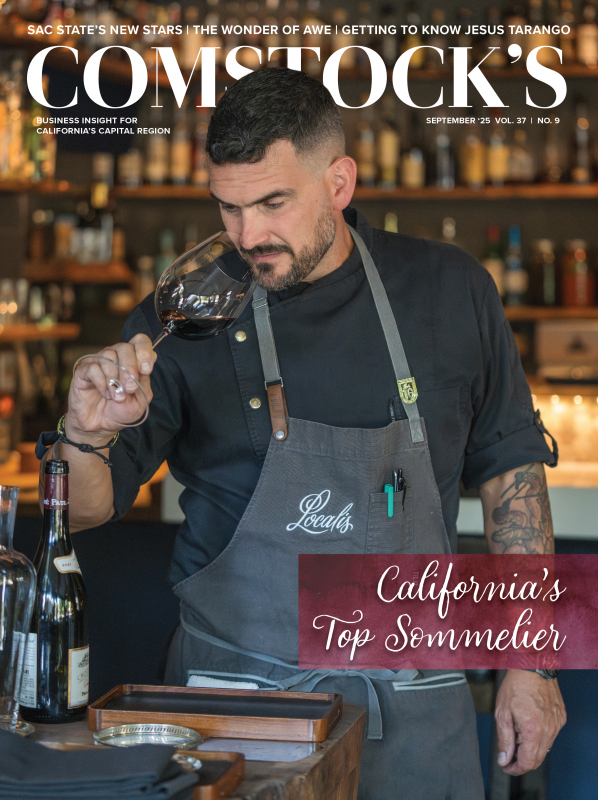Doctors call it the “obstetrician’s nightmare”: a childbirth emergency where the baby’s head emerges, but the shoulders get stuck behind the mother’s pubic bone. It’s an unpredictable situation, which can cause serious problems for the baby, the mother and the doctors in the delivery room.
The founding duo at Everest Medical Solutions has designed a device to make delivery safer and less traumatic when this complication arises. It’s a single-use tool that blends obstetric techniques and midwifery to handle these emergencies immediately.
Co-founder and CEO Jenna Eissmann likens the device to a hug. Picture someone coming up behind you, wrapping you in their arms. Your shoulders roll inward, your body caves. You are held. Everest Medical’s device, the Embrace, extends the reach of the obstetrician to essentially swaddle the baby, gently guiding the shoulders on the way out of the birth canal.
The impact of this device could be life-changing, especially when you consider current strategies for managing this condition, known as shoulder dystocia.
“The physicians who encounter this problem are trying to make sure that both patients — mom and baby — are safe,” Eissmann says. “But they are also worried about themselves and their own potential risk, so they’re using the tools available to them, which is a variety of hand maneuvers.”
These hand maneuvers can result in injury to the baby, including brachial plexus injury and nerve damage. In severe cases, they can lead to mortality. Not to mention potential injuries to the mother, such as postpartum hemorrhage.
Eissmann and Madeleine Mumford, co-founder and chief technological officer, received their master’s degrees from Cal Poly in June. But their startup began as a senior project. Sharing a passion for women’s health, they were initially assigned a project to replace vacuum and forceps during deliveries. Conversations with local OB-GYNs inspired them to shift their focus to shoulder dystocia, which is a leading cause of obstetric malpractice lawsuits in the U.S.
“Because childbirth is sort of a taboo space, there hasn’t been as much innovation in it,” Eissmann says. “So trying to find papers to inform our testing protocols has been a little bit difficult.”
Eissmann credits their advisors and access at Cal Poly, like publication resources, for helping them form a roadmap to a solution, and not just on a small scale. They’re thinking globally. The obstetric device market is expected to grow at a compounded annual growth rate of about 8.2 percent by 2030.
Brendon Keiser, who advises the Everest Medical team, had never heard of shoulder dystocia, but the more he learned, the more he realized the unmet need. He put them in touch with an OB-GYN, who validated the technology’s potential and explained how dire it can get during deliveries. The incidence is estimated to be three in 100 in the US, higher in other parts of the world, he notes.
“It’s a pants-on-fire situation,” says Keiser, who spent two decades working for Fortune 500 companies before shifting focus to startups 10 years ago. “You have to worry not only about the infant, but also the mom.”
Regarding medtech startups, he says, product or technical success typically comes down to the human clinical study. Because of this, he advises founders to de-risk the program as much as possible in the lab and, where possible, in animal studies.
Keiser highlights the team’s maturity level and how upfront they are if they don’t know something. One of the first things he remembers was how they walked him through a spreadsheet of various milestones.
“They talked about how each was going to de-risk the company: product development, customer discovery, regulatory, etc.,” he says. “The more you get a product through these activities, the higher likelihood of success.”
Keiser believes with their drive, humility and ability to take feedback, they will get them far. For Eissmann, that drive comes from a personal place when asked why she’s doing this.
“I like to answer it in more of a joking manner, but it is very serious: I don’t want to have a kid until this is solved,” she says. “Why I want to solve this problem is because it’s terrifying for the families that are affected by it. And as someone who is a woman and who is personally invested in women’s health, I think it’s really powerful that we are the ones with the opportunity to change this.”
–
Stay up to date on business in the Capital Region: Subscribe to the Comstock’s newsletter today.
Recommended For You

Startup of the Month: The Make Box
Robotic kits made to click with STEM learners
From crafting with popsicle sticks in elementary school to working with small electronic devices in middle school, Kavya Khare clearly had DIY in her DNA. She is now the founder of The Make Box, a UC Davis and Bay Area-based startup that creates modular robotic kits, SnapBots, for young students to engage in STEM.

Startup of the Month: CREE8
A ‘studio in the cloud’ connects creatives worldwide
“I wanted to build a platform that removed those barriers,” says Lisa M. Watts, CEO and founder of CREE8, “enabling creators to work from anywhere with the same power as an enterprise-grade studio. Truly reinventing the future of work.”

Startup of the Month: InnerPlant
Detecting crop diseases before symptoms show
InnerPlant develops seed technology that turns crops into living sensors that detect stress (such as fungus, pathogens and nitrogen deficiency) at the molecular level before visible symptoms appear. The startup’s initial focus is a soybean engineered to emit a fluorescent optical signal within 48 hours of fungal infection.

Startup of the Month: Nexa Labs
Biosensor aims to detect cattle disease early
Nexa Labs took home first prize at the 2025 UC Davis Big Bang! Competition for a solution designed to give farmers real-time health data on livestock so they can catch diseases early.




